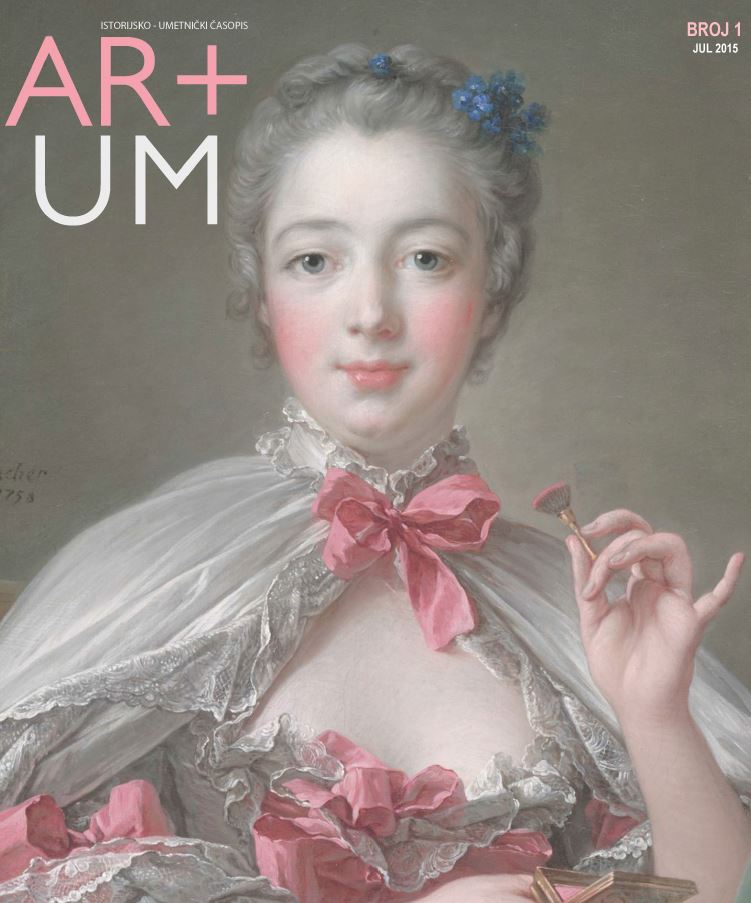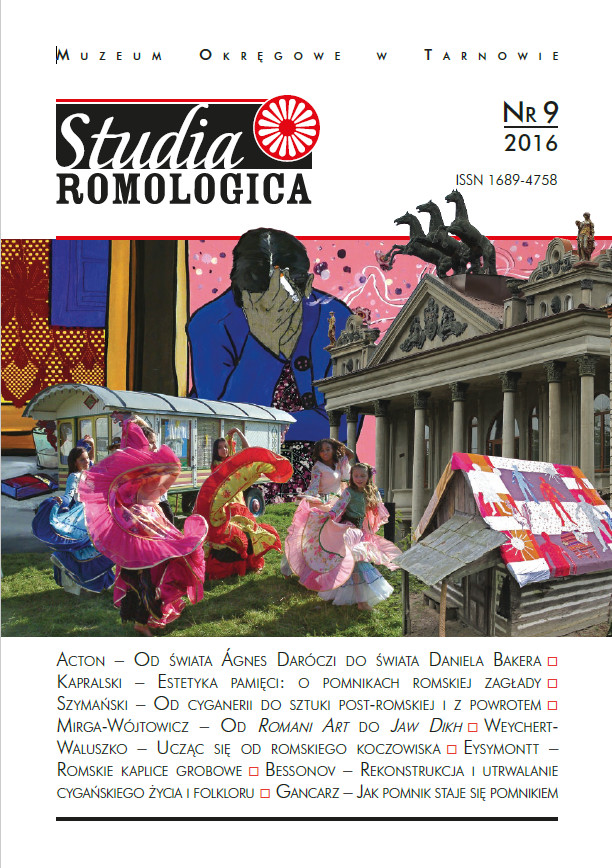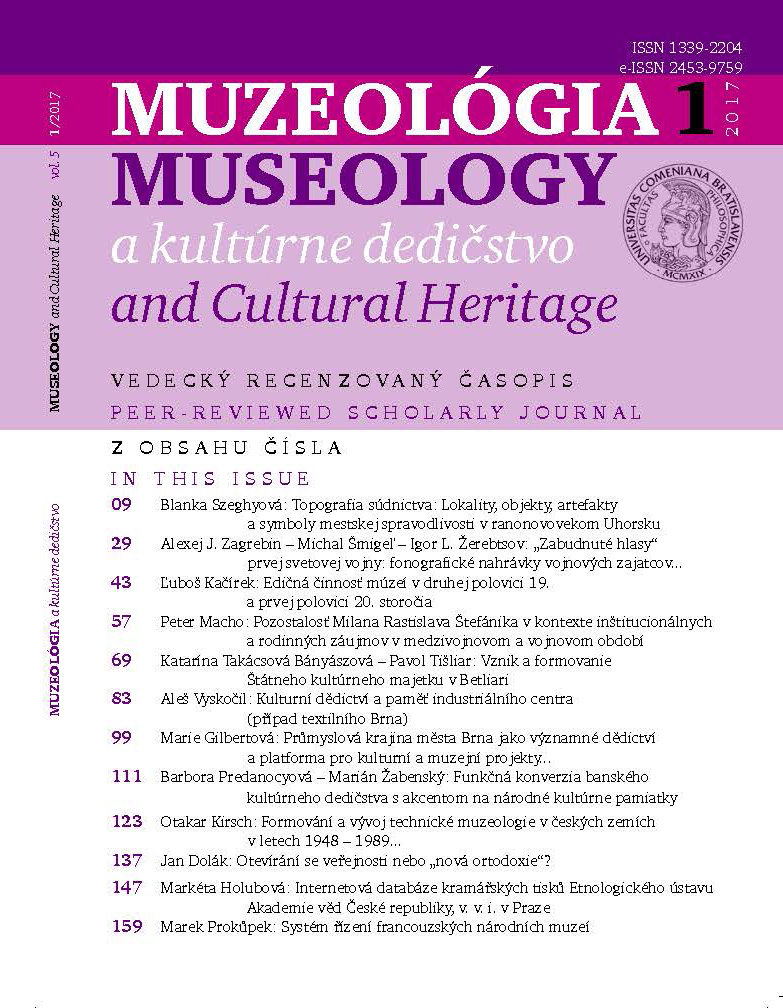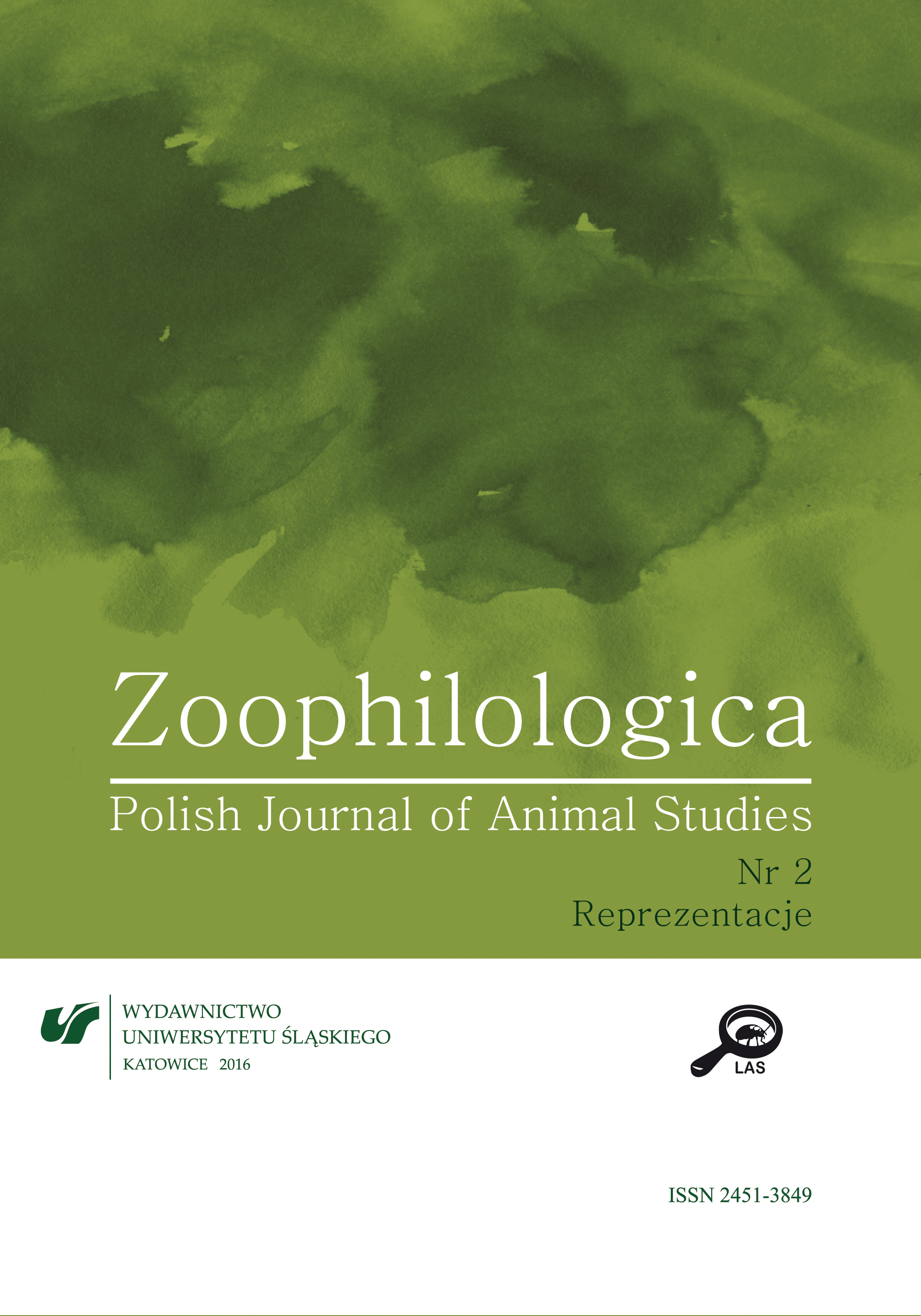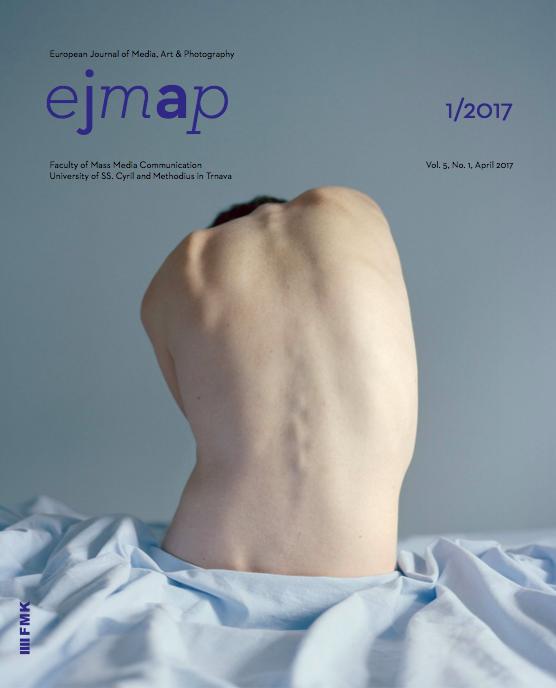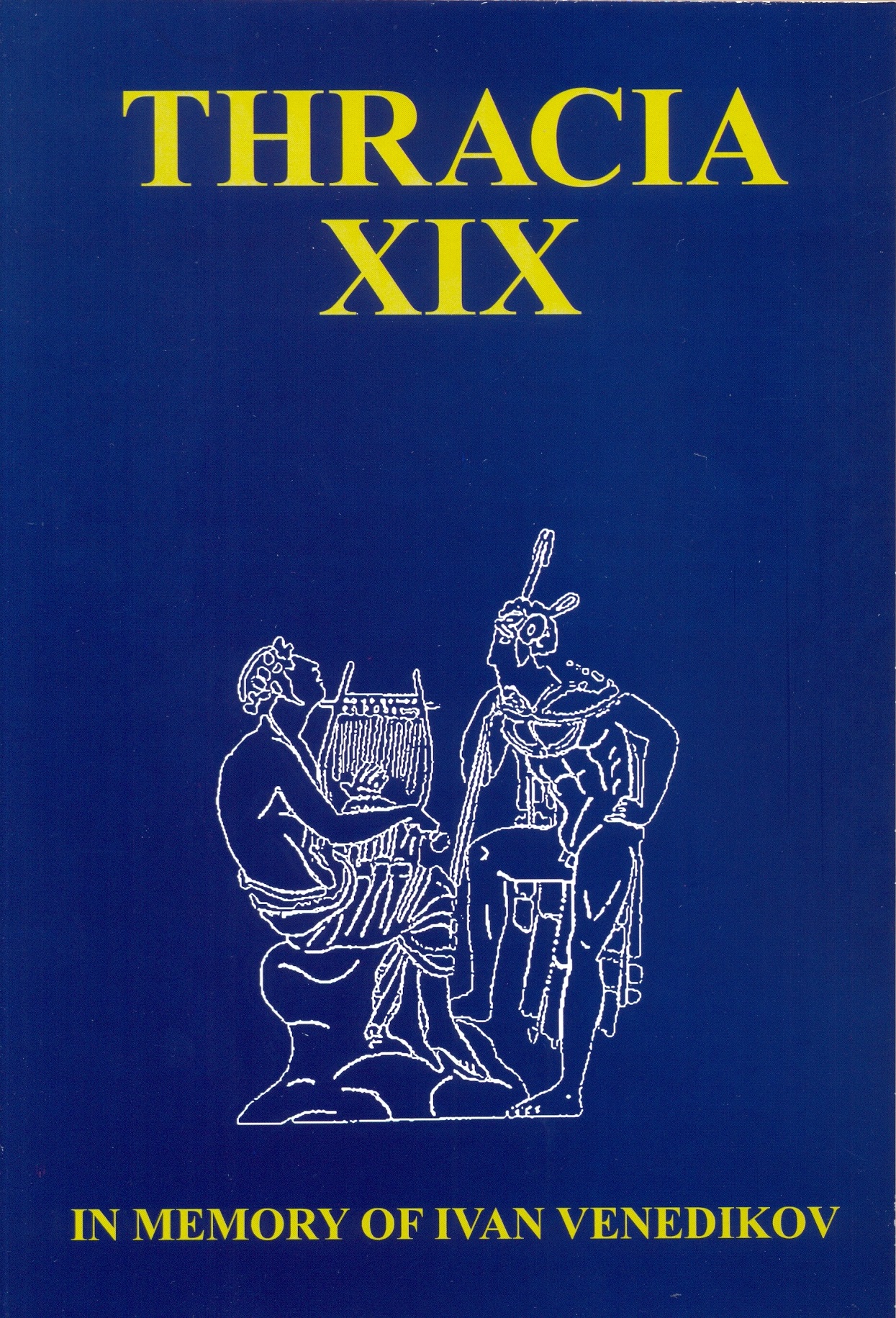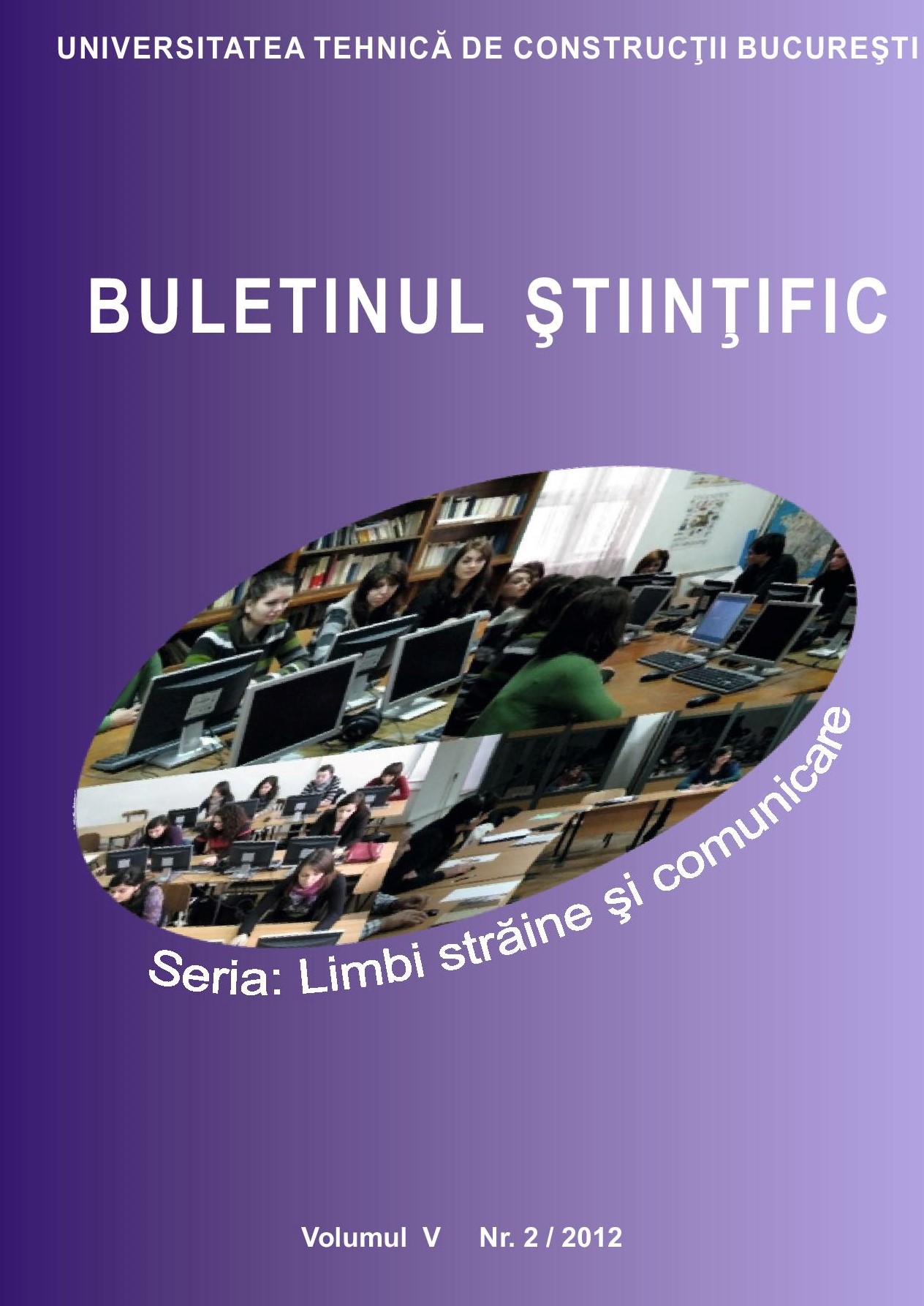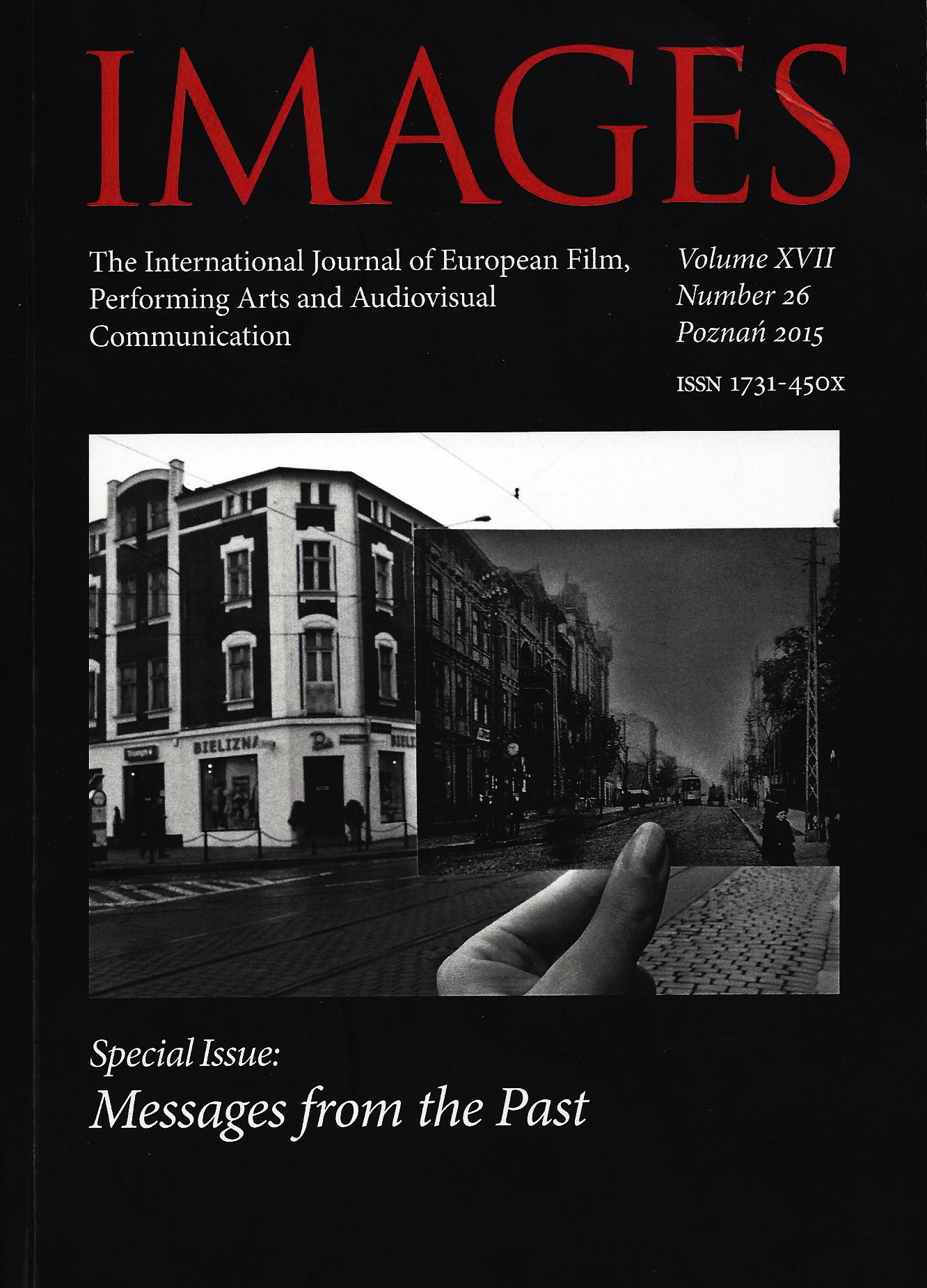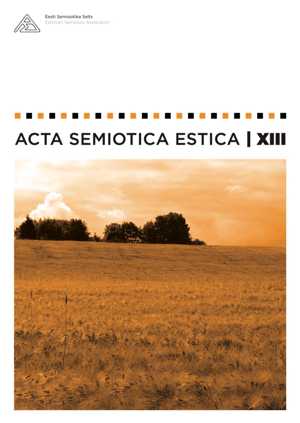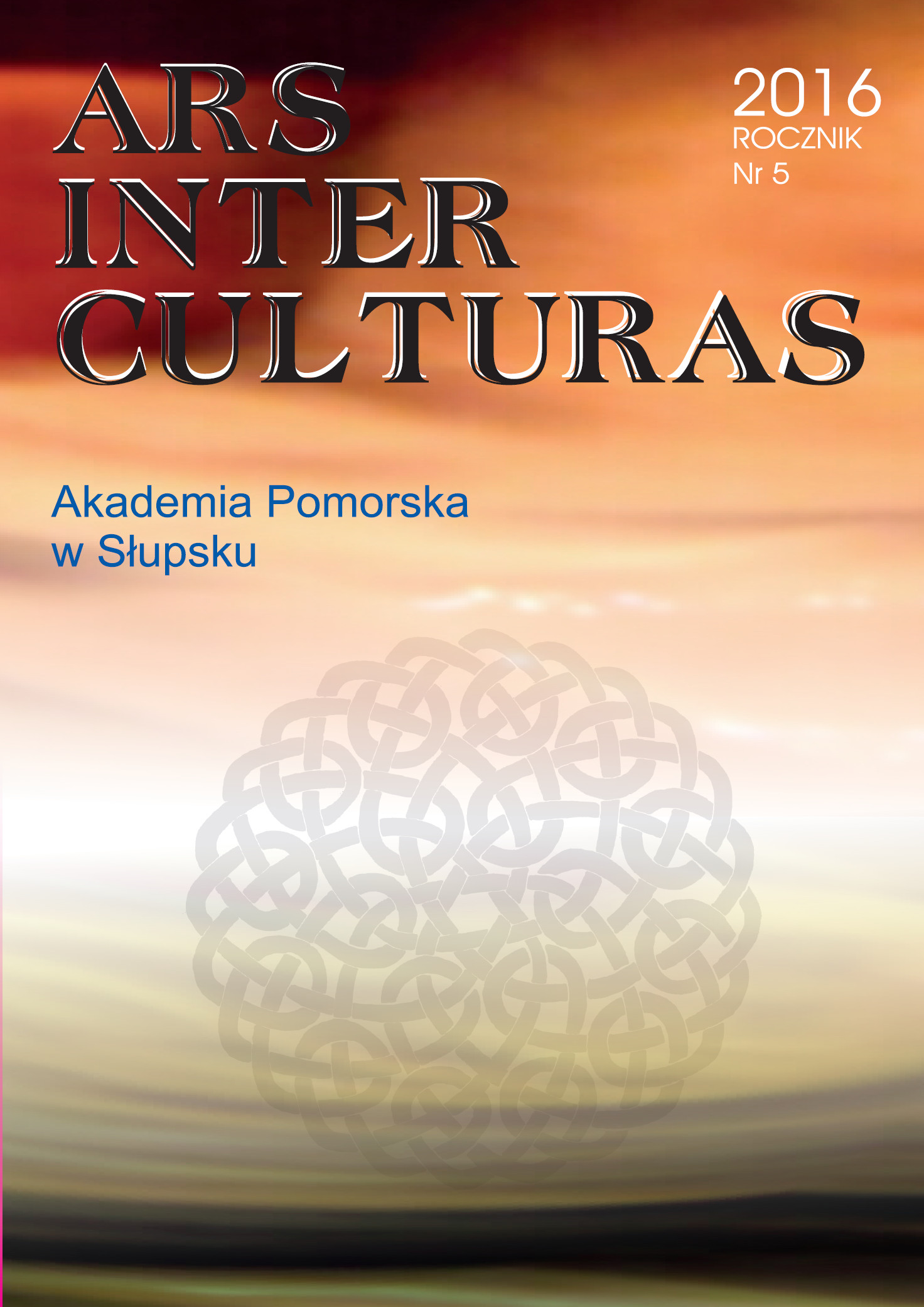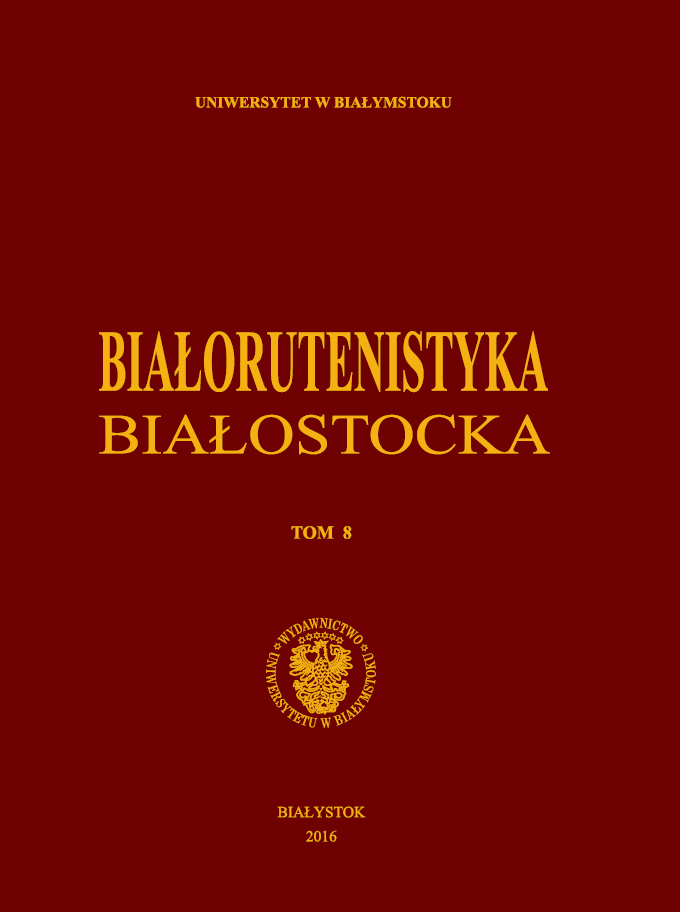Author(s): Elżbieta Mirga-Wójtowicz / Language(s): English,Polish,Romany
Issue: 1/2016
The Author begins with taking note of the phenomenon of the first Roma Pavilion at the Venice Biennale (2007) and the preceding exhibition in Budapest: First NationalExhibition of Self-taught Roma Artists (1979). These events serve as a backgroundto her essay about the beginning of the Roma artist movement in Poland. The Authorwrites about Romani Art movement in Poland, initiated in 2007 by MałgorzataMirga-Tas, which consisted of herself, Bogumiła Delimata and Krzysztof Gil, andabout the directions taken by the artists in the following years. Author of the articlepresents one by one artistic activities of Romani Art movement, especially thoseof Małgorzata Mirga-Tas. It turns out, that the present Roma artist movement inPoland is not only an artistic phenomenon, but a manifestation of the newly born,contextual, modern identity of young Roma elite.The Author begins with taking note of the phenomenon of the first Roma Pavilion at the Venice Biennale (2007) and the preceding exhibition in Budapest: First National Exhibition of Self-taught Roma Artists (1979). These events serve as a background to her essay about the beginning of the Roma artist movement in Poland. The Author writes about Romani Art movement in Poland, initiated in 2007 by Małgorzata Mirga-Tas, which consisted of herself, Bogumiła Delimata and Krzysztof Gil, and about the directions taken by the artists in the following years. Author of the articlepresents one by one artistic activities of Romani Art movement, especially those of Małgorzata Mirga-Tas. It turns out, that the present Roma artist movement in Poland is not only an artistic phenomenon, but a manifestation of the newly born, contextual, modern identity of young Roma elite.The Author begins with taking note of the phenomenon of the first Roma Pavilion at the Venice Biennale (2007) and the preceding exhibition in Budapest: First National Exhibition of Self-taught Roma Artists (1979). These events serve as a background to her essay about the beginning of the Roma artist movement in Poland. The Author writes about Romani Art movement in Poland, initiated in 2007 by Malgorzata Mirga-Tas, which consisted of herself, Bogumila Delimata and Krzysztof Gil, and about the directions taken by the artists in the following years. Author of the article presents one by one artistic activities of Romani Art movement, especially those of Malgorzata Mirga-Tas. It turns out, that the present Roma artist movement in Poland is not only an artistic phenomenon, but a manifestation of the newly born, contextual, modern identity of young Roma elite.
More...
